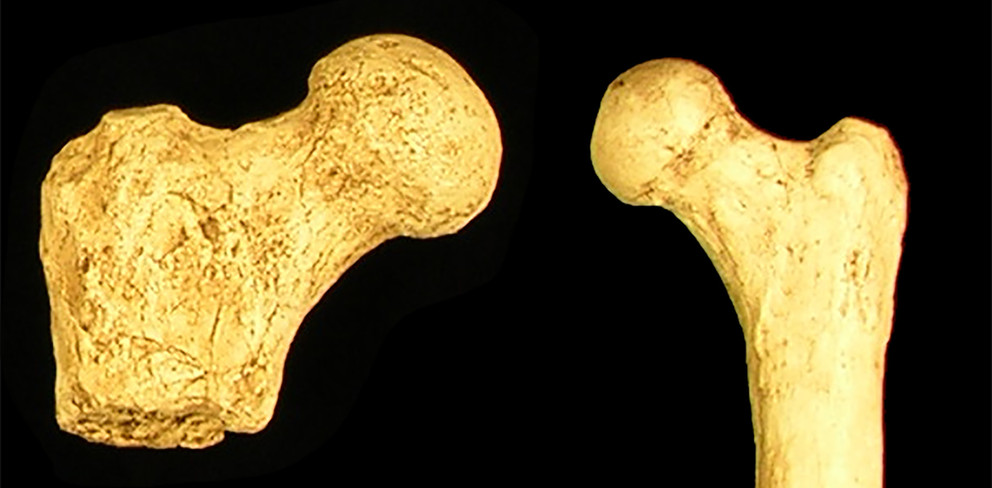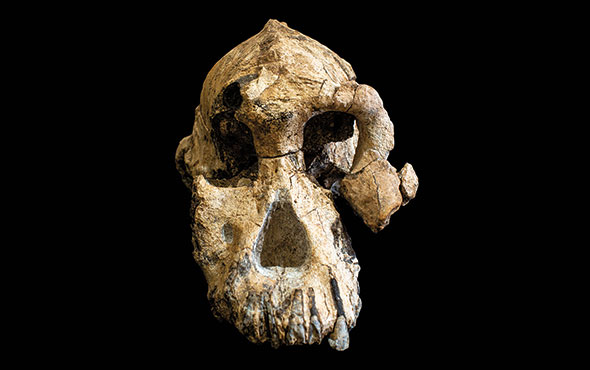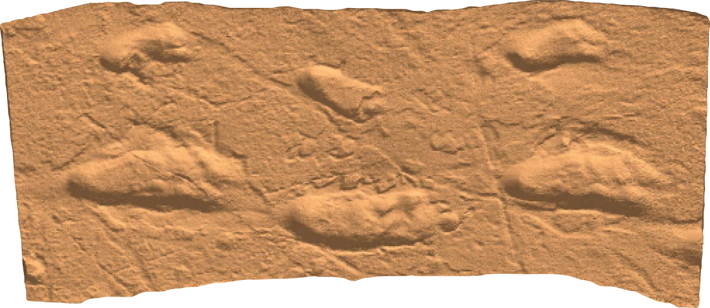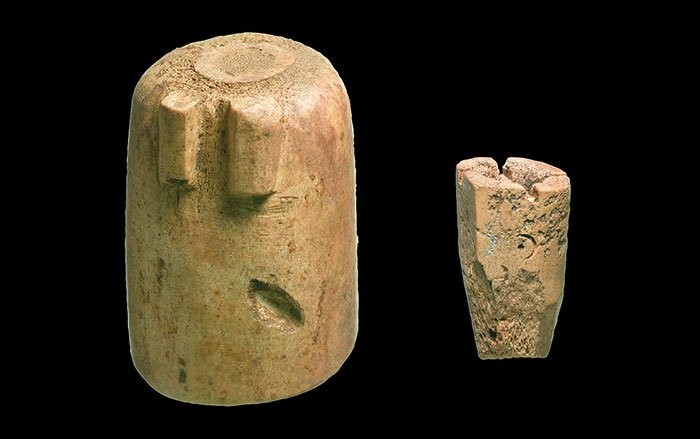
UNIVERSITY PARK, PENNSYLVANIA—It had been thought that there was a large difference in size between male and female Australopithecus afarensis individuals, but a new study conducted by researchers from Penn State University and Kent State University suggests that the sexual dimorphism among the early hominids was similar to that of modern humans. The difference in body size is usually seen in body size, weight, and the size of the canine teeth, which are about the same in male and female Australopithecines. “Lucy,” who stood about 3.5 feet tall, and other smaller A. Afarensis individuals have been thought of as females. Their brains were not yet large enough to require the alteration of the pelvic structure to allow for the birth of large-headed babies, however. “There is no reason why Lucy, if female, would have the wide notched pelvic bone of a human female. We can’t really sex Australopithecines,” Philip Reno of Penn State said in a press release. Reno and C. Owen Lovejoy of Kent State compared the bones of Lucy, and another larger, reasonably intact specimen known as Kadanuumuu, who stood between five and 5.5 feet tall, to the partial remains of other individuals. By determining the ratio of these fossils to Lucy, the team members could calculate the relative size of individuals from incomplete skeletons. “The range shows intermediate moderate levels of sexual dimorphism, A. afarensis is within the human dimorphic range,” Reno explained. For an annotated image of Lucy's remains, see "Lucy Up Close."










